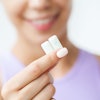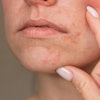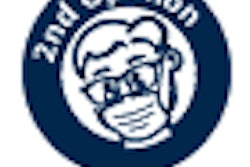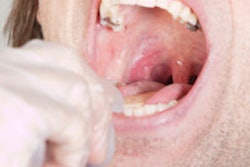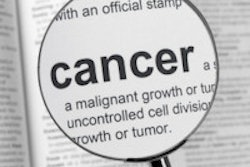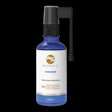
It is time, actually long past time, for the profession of dentistry to aggressively challenge the use of the pumice and rubber cup "prophylaxis" in caring for children. I place the term "prophylaxis" in scare quotes to indicate that there is nothing prophylactic about the use of pumice and a rubber cup to polish children's teeth -- it prevents nothing.
A prophylactic is, by definition, preventive. Our profession has known for many years there is no evidence to support this procedure as a component of a preventive regimen. A recent systematic review of the literature by Azarpazhooh and Main in 2009 only reconfirmed this understanding (British Dental Journal, October 10, 2009, Vol. 207, E4).
 David A. Nash, DMD, EdD.
David A. Nash, DMD, EdD.In 1995, the ADA published a seminal report, entitled "Treating Caries as an Infectious Disease" (Journal of the American Dental Association [JADA], 1995, Vol. 125:suppl, pp. 2S-15S). The effort was ADA's first in identifying caries risk guidelines: low, moderate, and high. The report identified preventive treatment modalities by caries risk status and age group.
In no instance was a "dental prophylaxis" identified as a caries prevention modality. Polishing children's teeth with pumice and a rubber cup removes the protective enamel pellicle, which requires approximately seven days to mature, according to Zero in 1999 (Dental Clinics of North America, October 1999, Vol. 43:4, pp. 635-664). Additionally, according to a 1978 study by Stookey in the Journal of Dental Research (January 1978, Vol. 57:1, p. 36) and a 1967 study in Helvetia Odontologica Acta by Vrbic and colleagues (1967, Vol. 11:1, pp. 21-26), it removes 0.6 to 4.0 microns of surface enamel. These outer few microns of enamel retain the greatest concentration of protective fluoride, according to a 1982 study in Pediatric Dentistry (September 1982, Vol. 4:3, pp. 228-233).
In spite of this, the majority of dentists and hygienists, including pediatric dentists, continue to advocate the "prophy" twice yearly for our children. A 2004 survey of pediatric dentists indicated at that time that 67% of board-certified pediatric dentists routinely performed a pumice and rubber cup prophylaxis on children (Pediatric Dentistry, January-February 2004, Vol. 26:1, pp. 17-22). Some practitioners now perform the "prophy" with a toothbrush and dental floss, which also is not "prophylactic." In Kentucky, Medicaid will pay $48.10 twice a year for a "prophylaxis" on a child with pumice and rubber cup, or with toothbrush/dental floss,yet with no evidence of either having any value. Teeth have to be "cleaned" daily with a toothbrush and dental floss.
The comment is often heard that children need to visit the dentist for their six-month "cleaning" appointment. We have permitted parents to develop the unjustified and inaccurate belief that there is something special about the "cleaning" done in the dental office when that is simply not the case. Such a belief system actually mitigates against parents understanding that it is the "cleaning" of the teeth that they and the child accomplish daily at home that is important.
I once inquired of a private insurance executive as to why insurance companies pay for this essentially valueless polishing of the teeth of children. His response was that while they understood its lack of value, their parent beneficiaries expect a six-month "cleaning" to be a covered benefit of their insurance plan. It's easier to acquiesce than to right a wrong. By our silence we permit millions of dollars, including major taxpayer dollars, to be wasted each year on a nontherapeutic dental procedure.
But, you rush to say, "What about children with stain and calculus?" Stain is not an etiologic factor in dental disease. Yes, removing calculus is prophylactic and should be accomplished. However, relatively few children develop calculus prior to adolescence. The teeth from which calculus is removed should be polished, but only those teeth from which the calculus has been removed -- thus highly selective polishing.
Interestingly, a child's "prophylaxis" is a procedure for which a valid informed consent is morally (JADA, October 1984, Vol. 109:4, pp. 597-603; JADA, October 1986, Vol. 113: pp. 599-603) and legally (Canterbury v. Spence, 1972) required, but which rarely occurs in clinical practice, for reasons evident in the following narrative:
Dentist: Ms. Jones, I plan to perform a prophylaxis on Jane today and require your permission to proceed.
Ms. Jones: Doctor, what is a prophylaxis exactly?
Dentist: We polish Jane's teeth with pumice in a rotating rubber cup in order to remove the plaque from the teeth.
Ms. Jones: Is that necessary?
Dentist: Actually, it is not. However, many parents believe it helps to make the teeth whiter, brighter, and healthier, and we want to satisfy them.
Ms. Jones: Are their advantages to you doing this procedure over and above us removing the plaque with a toothbrush and dental floss daily at home.
Dentist: Well, hmm, not really.
Ms. Jones: Could there be any disadvantages to this prophylaxis you propose?
Dentist: Most parents don't ask about that, but, if I were honest, I would have to say there are. The rubber cup/pumice prophylaxis removes the protective enamel pellicle from the surface of the teeth and also removes outer microns of enamel where decay-protective fluoride has accumulated from fluoride in the water, brushing with a fluoride toothpaste, and the last professionally applied high-potency topical fluoride -- thus potentially making your child more susceptible to tooth decay.
Ms. Jones: Wow, now I am really just curious. What does this cost?
Dentist: My professional fee is $50.
Ms. Jones: Doctor, I simply cannot believe you want my consent to perform a procedure on my child that has no therapeutic value, that potentially increases my child's susceptibility to tooth decay, and then ask me to pay you $50. Frankly, I think I should seek care for my child from another dentist whose judgment I can trust.
Is there any justification for charging and receiving reimbursement for the so-called children's prophylaxis, absent calculus removal, and subsequent selective polishing? I can think of only one: If the professional fee charged was not for removing plaque from the teeth, but rather for the time spent educating the parent and the child regarding the etiology and prevention of dental disease and their role in caring for the teeth, including thorough instruction in how to properly brush and floss the teeth daily to prevent the accumulation of plaque.
Despite the title we dentists wear of doctor, meaning teacher, I suspect that such instruction is not a major component of the so-called "children's prophylaxis" that is typical during the periodic dental visit.
If our profession is serious about evidence-based dentistry, we must challenge the extraordinarily expensive, universally practiced, nontherapeutic rubber cup and pumice (including the toothbrush/dental floss) "prophylaxis" on a child.
David A. Nash, DMD, EdD, is the William R. Willard Professor of Dental Education and Professor of Pediatric Dentistry at the University of Kentucky College of Dentistry in Lexington. He can be reached at [email protected].
The comments and observations expressed herein do not necessarily reflect the opinions of DrBicuspid.com, nor should they be construed as an endorsement or admonishment of any particular idea, vendor, or organization.
